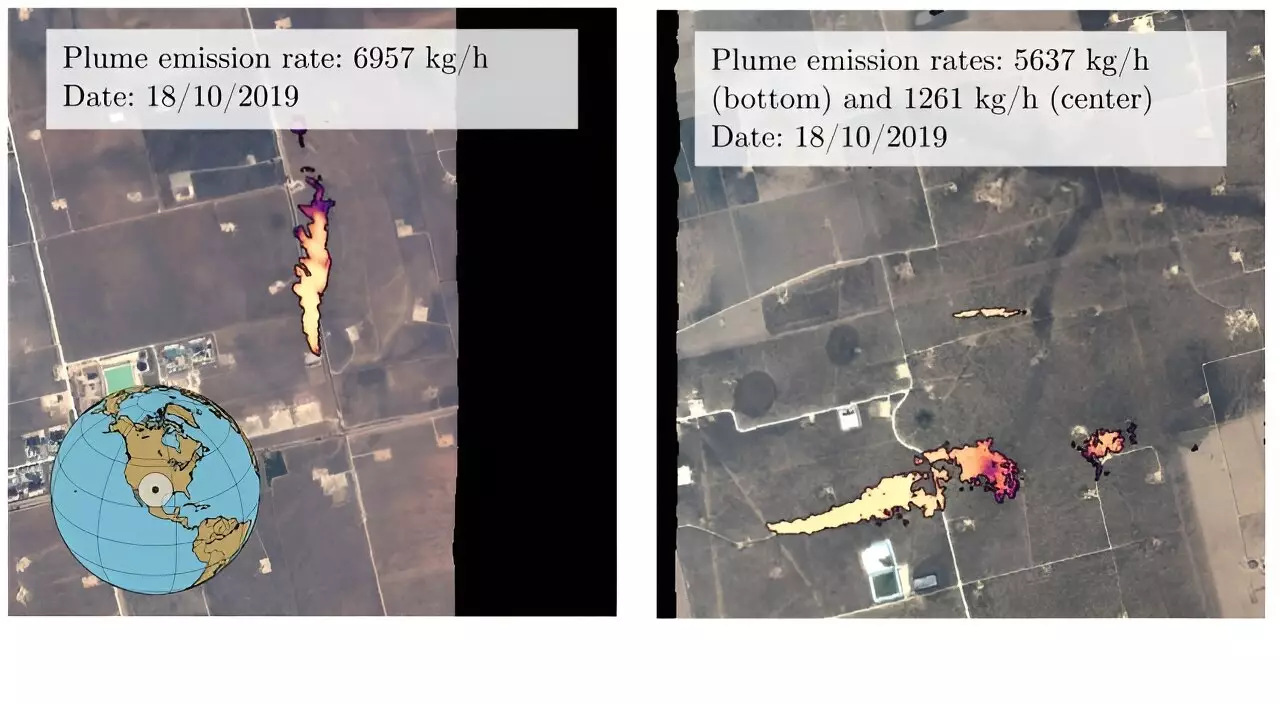Scientists from the University of Oxford, in collaboration with Trillium Technologies’ NIO.space, have developed a groundbreaking tool that utilizes machine learning and hyperspectral data to automatically detect methane plumes on Earth from orbit. This breakthrough has immense potential in identifying and monitoring methane emissions, allowing for more effective action in reducing greenhouse gas emissions.
While the focus on achieving Net Zero targets often revolves around reducing CO2 emissions, it is equally critical to address methane emissions. Methane is a potent greenhouse gas, approximately 80 times more effective in trapping heat than CO2. However, methane has a significantly shorter atmospheric lifetime, lasting only around seven to 12 years compared to centuries for CO2. Taking swift measures to reduce methane emissions from anthropogenic sources would have an immediate impact on slowing global heating and improving air quality. In fact, it is estimated that achievable methane emission reductions could potentially avoid a temperature increase of up to 0.3°C over the next two decades.
Until now, mapping methane plumes from aerial imagery has been a time-consuming and laborious process due to the limitations of available methods. Methane gas is both invisible to the human eye and the spectral ranges commonly used in satellite sensors. When satellite sensors do operate within the correct spectral range to detect methane, the data is often obstructed by noise, requiring manual analysis to identify the plumes effectively. These challenges have hindered progress in effectively monitoring methane emissions on a large scale.
The team of Oxford researchers has developed a machine-learning tool that overcomes these obstacles by detecting methane plumes in data collected from hyperspectral satellites. Hyperspectral satellites detect narrower bands than traditional multispectral satellites, making it easier to tune the sensors to the unique signature of methane and remove noise interference. However, hyperspectral satellites produce significantly larger amounts of data, necessitating the use of artificial intelligence (AI) for efficient processing.
The researchers trained the machine-learning model using a dataset of 167,825 hyperspectral tiles, each representing an area of 1.64 km². These tiles were captured by NASA’s aerial sensor AVIRIS over the Four Corners area of the United States. The algorithm was then applied to data collected from other hyperspectral sensors in orbit, such as data from NASA’s new hyperspectral sensor EMIT (Earth Surface Mineral Dust Source Investigation mission) attached to the International Space Station, which provides near-global coverage of the Earth.
The machine-learning model developed by the Oxford researchers achieved an impressive accuracy rate of over 81% in detecting large methane plumes, surpassing the accuracy of previous approaches by 21.5%. Additionally, the model significantly improved the false positive detection rate for tile classification, reducing it by approximately 41.83%. This enhanced accuracy and efficiency will undoubtedly revolutionize methane detection and monitoring efforts.
In an effort to encourage further research in methane detection, the Oxford researchers have made both the annotated dataset and the code used for the model openly accessible on their project page on GitHub. This gesture aims to facilitate collaboration and innovation in the field, ultimately driving advancements in methane monitoring technology.
The development of a machine-learning tool that can automatically detect methane plumes from orbit using hyperspectral data marks a significant milestone in combating greenhouse gas emissions. This groundbreaking technology enables scientists to identify and monitor excessive methane emissions, thereby facilitating more effective measures to reduce global warming and improve air quality. The unprecedented accuracy and efficiency of this tool make it invaluable in the pursuit of a sustainable future. While the battle against climate change continues, the ability to detect and address methane emissions from space provides us with a new arsenal to combat this pressing issue.



Leave a Reply